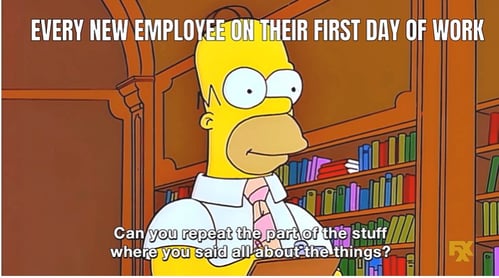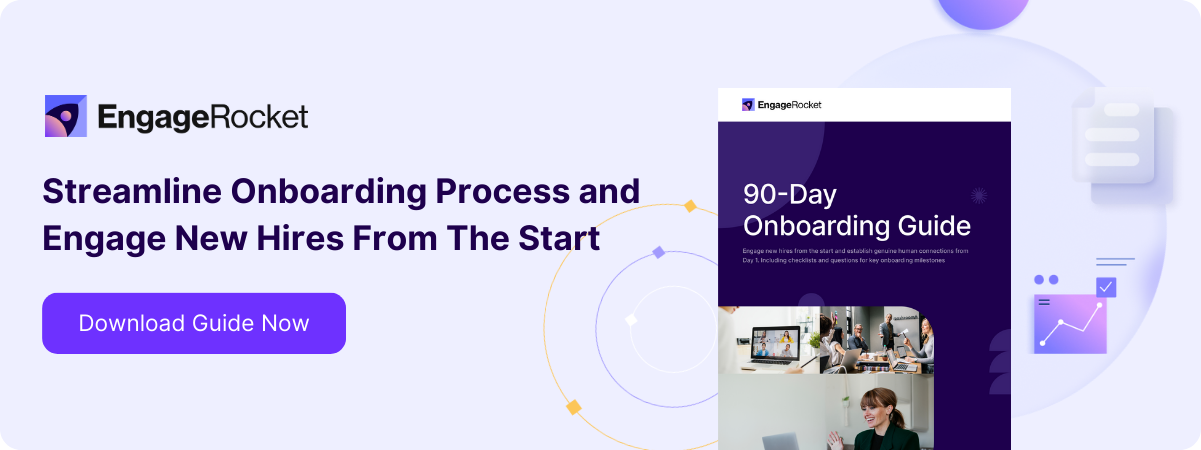Perhaps many organizations already understand the importance of employee onboarding. However, there are challenges that may prevent them from doing so. Here are some of the common hurdles in implementing an effective employee onboarding process.
When an employee first joins a new organization, there may be a lot of uncertainty and concern about how they would do well and fit into the team/organization.
We are all too familiar with these first-day-on-the-job woes:

The 'typical' first day on the job
Without providing proper information and support, employees may feel that they are not set up for success and they would have problems adjusting and performing in their role.

Onboarding horror story shared by a user on Reddit
That being said, it doesn't mean that organizations are sitting on their laurels.
In fact, many HR professionals, leaders, and managers are well aware of the challenges in onboarding a new hire.
The underlying reason why onboarding a new hire can be hard to execute is because it has a lot of dependencies across teams and employees to work well.
This reason then manifests into different problem areas. Here are 5 of the most-cited challenges in employee onboarding:
1. Lack of a structured employee onboarding plan
For many new hires, their onboarding experience can feel like an 'info dump'.
When planning for new hires' onboarding, the length of the onboarding journey might be poorly estimated such that it is unrealistically short.
They may receive endless work documents and knowledge in the span of a few days (or hours!), in the hopes they can quickly learn the ropes and hit the ground running.
This can happen when the HR and/or managers do not have the bandwidth to plan out the onboarding process properly.
New hires may be getting the perception that their company/team is disorganized and this may lower their motivation. This is not the impression employees should experience, especially on the first day at work.
If this perception remains in their coming weeks or even months, it may lead to them feeling demotivated or even disengaged, lowering their performance overall.
2. Maintaining standards and consistency in the onboarding process
We would want all new employees to receive the same information, have the same experiences and build strong connections throughout the organization, regardless of their work arrangement, job role or location.
This allows for a consistent culture and reduces the potential for confusion. It also ensures that the company is compliant with relevant laws and regulations.
However, getting standardization right usually involves time, effort, and the right platform at the onset. It requires various stakeholders like the leadership team, HR and managers to understand what processes and information would apply to most job roles in the organization to come up with the standardized onboarding plan.
However, once that is done well, it actually enables efficiency in the long run as the organization does not have to reinvent the wheel for each new hire.
💡 Standardize your onboarding process with clear step-by-step actions
We have put together a comprehensive list of best practices you can copy and customize, so you don't have to build your onboarding plan from scratch. Get it on the link below 👇
3. Personalizing the process for specific roles
While standardization is crucial for consistency and efficiency, some personalization should be factored into the onboarding process as the nuances for each role should still be accounted for.
Some roles require more tailored training and onboarding processes than others. For example, a sales representative may need to undergo a series of training, so they can nail sales pitches for different situations.
Tailoring the onboarding process to account for this personalization requires a collaborative effort between HR, leaders, and department heads.
This means that onboarding needs to be part of all these stakeholders' workflow (which may be seen as "more work"), but it cannot simply be one party's responsibility (also see below).
4. Assigning and tracking for accountability
Since there will be multiple stakeholders involved in an effective onboarding process, assigning tasks is the first step, and there needs to be further tracking to see the progress for each task.
That is typically done by the HR who oversees the entire onboarding process.
But the input from each stakeholder should not be neglected so that the tracking can be even possible for a start.
5. Lack of technology solutions
This point relates to the other challenges.
Although there are many solutions that help organizations with their onboarding process, finding one perfect solution remains difficult. This is due to the different nuances and needs of different teams and roles.
For example, you may choose a solution that can improve accountability, ensure consistency, and reduce the administrative burden on managers and co-workers.
However, the solution chosen may not meet specific teams' needs for training and orientation.
---
The challenges laid out above highlight the need for a structured, organized onboarding process. The good news is you don't have to scratch.
There are resources that can help you structure and plan for your employee onboarding process.
If you're keen to learn more about the best practices in onboarding a new hire from Day 1 to Day 365, we have put together a comprehensive Guide to Employee Onboarding here.
💡 Get practical step-by-step recommendations for better employee onboarding
We have put together a comprehensive list of best practices so your new hires can feel engaged even before they join. Including the full checklist of to-dos, welcome email templates, and inspirations from 20+ companies.
About the author

CT Leong is the founder of EngageRocket. Before becoming an entrepreneur, he was a Regional Director of Gallup - one of the world's top HR advisories. He graduated with a degree in Economics at the University of Cambridge, and has an MA in Political Science from Columbia University.





 .
. 